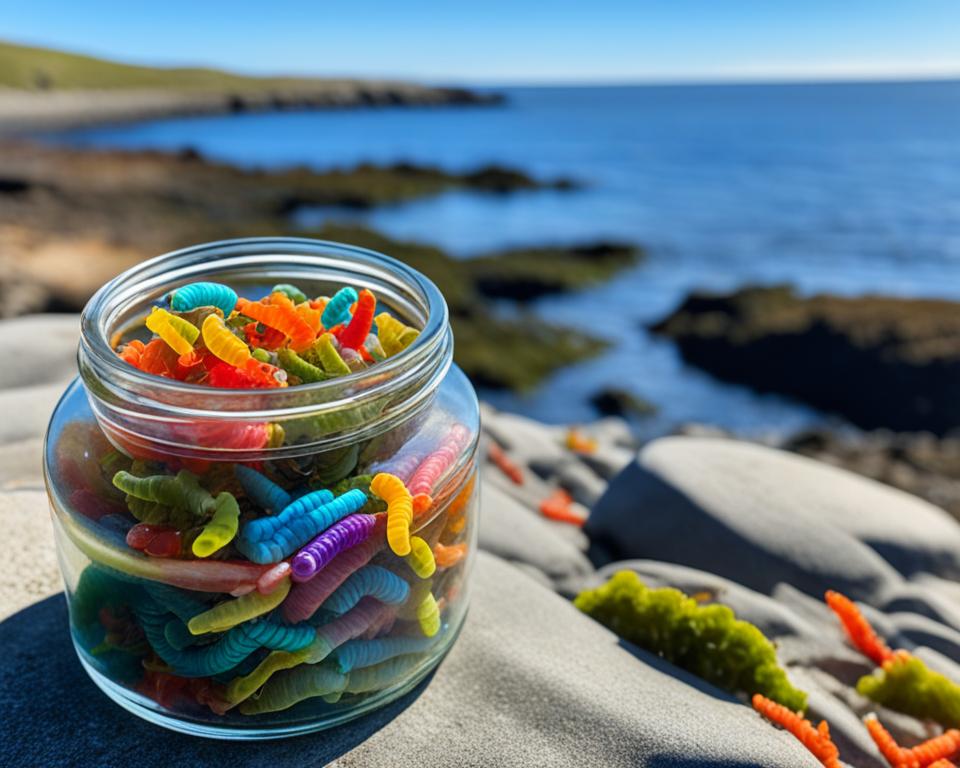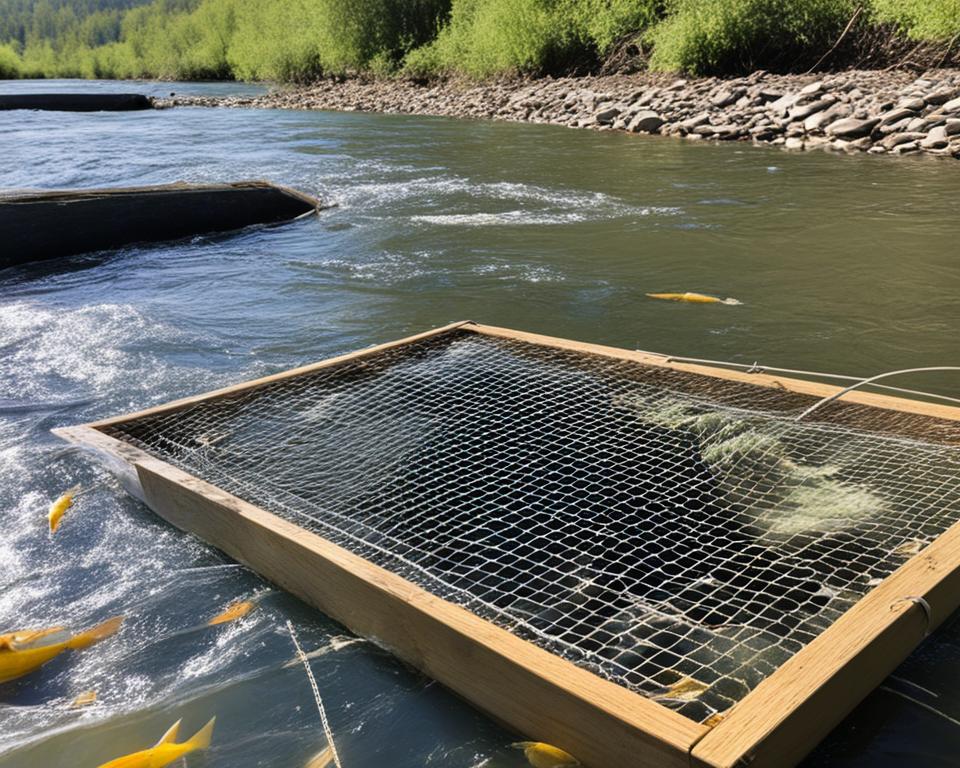Build Your Own DIY Fish Trap: A Simple, Eco-Friendly Way to Catch Fish
Want to catch fish without a rod and reel? Building your own DIY fish trap is a smart, budget-friendly, and eco-conscious way to fish effectively. Using simple materials like branches, cord, and mesh, you can create a trap that naturally guides fish inside and keeps them there. This age-old technique still works today and is perfect for outdoor survival, sustainable living, or just a fun weekend project. Whether you’re fishing for food or practicing bushcraft skills, a DIY fish trap is a reliable, low-cost solution that really gets results.
Key Takeaways
- Unlock the power of DIY fish trapping for sustainable, low-cost fishing
- Explore the benefits of homemade fishing gear and eco-friendly trapping techniques
- Learn how to construct a simple yet effective survival fish trap using basic materials
- Discover the art of baiting and setting up your DIY fish trap for maximum success
- Understand the legal considerations and regulations surrounding DIY fish trapping
Introduction to DIY Fish Traps
People have used fish traps for hundreds of years. They make a design that lets fish in but not out. Now, we use wire mesh or netting, but the idea is the same.
Overview of Traditional and Modern Fish Trapping Methods
Fish traps have been around for a long time. Early ones were made from things like reeds and stones. Now, we use wire mesh and plastic netting.
Benefits of DIY Fish Traps
- Cost-effective: Making your own fish trap is cheap and easy with things you can find around you.
- Eco-friendly: These traps catch fish without harming the environment. They don’t use hooks or nets that can hurt nature.
- Customizable: You can make your fish trap to catch certain fish and fit your fishing spot.
DIY fish traps have many benefits. They’re cheap to make and good for the planet. They let you catch fish without harming the ecosystem.
“With a little creativity and the right materials, anyone can build an effective fish trap that’s both budget-friendly and environmentally conscious.”
Materials Needed for Building a DIY Fish Trap
Building a DIY fish trap needs a few key parts. You’ll need branches, cordage, wire mesh or netting, and basic tools. With these items, you can make a fish trap that fits your needs.
The main parts for a DIY fish trap are:
- Branches of different sizes – Big ones for the frame and small ones for weaving.
- Cordage like willow bark, twine, or rope – It holds the branches together.
- Wire mesh or netting – This traps the fish inside.
- Tools like a hammer, wire snips, and a measuring tape – You need these to put the trap together.
You can change the size and shape of the fish trap for different fish and water conditions. By picking and preparing these materials well, you can make a fish trap that works great for you.
“The beauty of a DIY fish trap is that you can tailor it to the specific fish you’re targeting and the environment it will be used in.”
Step-by-Step Instructions for Constructing the Fish Trap
Building your own DIY fish trap is rewarding and saves money. Let’s go through the steps to make a strong and good trap.
Preparing the Framework and Base
First, tie the thinner ends of the vertical pieces, called warps, to a piece of wood for the cap. Make sure to use an odd number of warps for the right pattern. Then, start weaving the flexible weavers, or wefts, over and under the warps.
Weaving the Trap Body and Funnel Entrance
After the base is woven, make a ring halfway up the warps to shape the trap. Keep weaving until you reach the length you want, then bend the warps over and press them into the weavers. Finally, make a smaller cone to fit inside the big one, trapping fish.
By doing these steps, you’ll make a strong and effective DIY fish trap. It will help you catch your next big fish.
Baiting Techniques for Attracting Fish
Choosing the right bait for your DIY fish trap is key to catching more fish. The bait you pick can really change your fishing game. Let’s look at some bait options and tips to make your trap work better.
Bait Selection for Different Fish Species
Use bait that fits the fish you want to catch. Here are some good baits for different fish:
- Catfish: Chicken liver, cut-up hot dogs, dough balls, or commercial catfish baits
- Carp: Corn, bread, dough balls, or prepared carp baits
- Crappie: Minnows, small pieces of hot dog, or crappie-specific baits
- Sunfish: Worms, small pieces of hot dog, or bread
The bait should be something the fish can’t resist. Try different baits to see what works best in your area.

Some people tie the bait in the trap to stop it from getting pulled out. This keeps the bait inside, helping you catch more fish.
You can also use your trap without bait. Just block a creek or river and leave a small opening for fish to go into the trap. This method works well where lots of fish swim by.
Setting Up and Placing the DIY Fish Trap
When setting up the DIY fish trap, think about the fish you want to catch and the water conditions. For catfish, put the trap near where they like to spawn. This is where they gather a lot.
Make sure the trap fits the water’s depth. It should not stick out above the water. Use an anchor rope to keep the trap in place and make it easy to get back.
Choosing the Right Location and Water Conditions
Picking the right spot for your DIY fish trap is key. Think about these things:
- Target fish species: Place the trap where the fish you want to catch live.
- Water depth: The trap should fit the water’s depth so it doesn’t stick out.
- Water flow: Find areas with some current to help fish go into the trap.
- Obstructions: Don’t put the trap near big rocks or trees that could block it.
- Accessibility: Pick a spot that’s easy to get to for checking and fixing the trap.
| Fish Species | Ideal Trap Placement | Water Conditions |
|---|---|---|
| Catfish | Near spawning grounds | Moderate current, shallow to medium depth |
| Crappie | Around submerged structures | Calm, clear water, medium depth |
| Trout | In fast-moving streams or rivers | Swift current, shallow to medium depth |
Checking and Maintaining the Fish Trap
Keeping your DIY fish trap in good shape is key. It helps it work well and keeps caught creatures safe. Check the trap every day to make sure no turtles or otters are trapped. Pull it in slowly and carefully because you don’t know what’s inside.
If you’re catching crabs, pull the trap in fast to keep them from getting away. This makes catching them easier and keeps them safe. Also, clean the trap often to get rid of dirt and algae. This keeps it working right.
| Maintenance Task | Frequency |
|---|---|
| Check the trap for trapped animals | Daily |
| Clean the trap to remove debris and algae | Weekly |
| Inspect the trap for any damage or wear | Monthly |
| Replace worn or damaged parts | As needed |
By doing these things, your DIY fish trap will stay in great shape. You’ll get lots of catches for many years.
DIY Fish Trap Tips and Tricks
Building your own DIY fish trap can be made better with some tips and tricks. One important thing is the way you weave the trap body. Using an odd number of warps makes the pattern right. This makes the trap strong and able to handle the water’s flow.
Also, think about the funnel entrance. Use wire that’s easy to untie to open or empty the trap fast. Adding something heavy like an egg sinker to the door flap keeps it open. This helps catch more fish.
| Tip | Description |
|---|---|
| Use Odd Number of Warps | Ensuring the weaving pattern is correct for a sturdy trap structure |
| Secure Funnel with Removable Wire | Allowing for easy release or removal of the catch |
| Add Weight to Door Flap | Helping the trap stay open in the current for better fish trapping |
Using these tips can make your DIY fish trap work better. It can help you catch more fish. The secret is in the small details that make it work well and easy to use.
Legal Considerations and Regulations
It’s key to know the local laws about fish traps. These laws change a lot by place. Some places let you use only basic traps in survival situations. Others might ask for special permits or have rules about trap size.
In the U.S., fish trap rules are complex and vary by state. Some states need a special permit for traps. Others limit the materials you can use or the trap’s size. Breaking these rules can lead to fines or legal trouble.
Before you start your fish trapping project, make sure you know the laws in your area. This keeps you legal and protects the local fish and their homes. By knowing the rules, you can enjoy trapping fish the right way and help keep the fish safe for everyone.
FAQ
What is a DIY fish trap?
What are the benefits of using a DIY fish trap?
What materials are needed to build a DIY fish trap?
How do you construct a DIY fish trap?
What are some tips for using a DIY fish trap effectively?
What are the legal considerations for using a DIY fish trap?
Source Links
- Survival Fish Trap – https://www.wildernesscollege.com/survival-fish-trap.html
- How to Make a Fish Trap: 14 Steps (with Pictures) – wikiHow – https://www.wikihow.com/Make-a-Fish-Trap
- DIY. Fish trap. It works!!! – https://www.reef2reef.com/threads/diy-fish-trap-it-works.215301/
